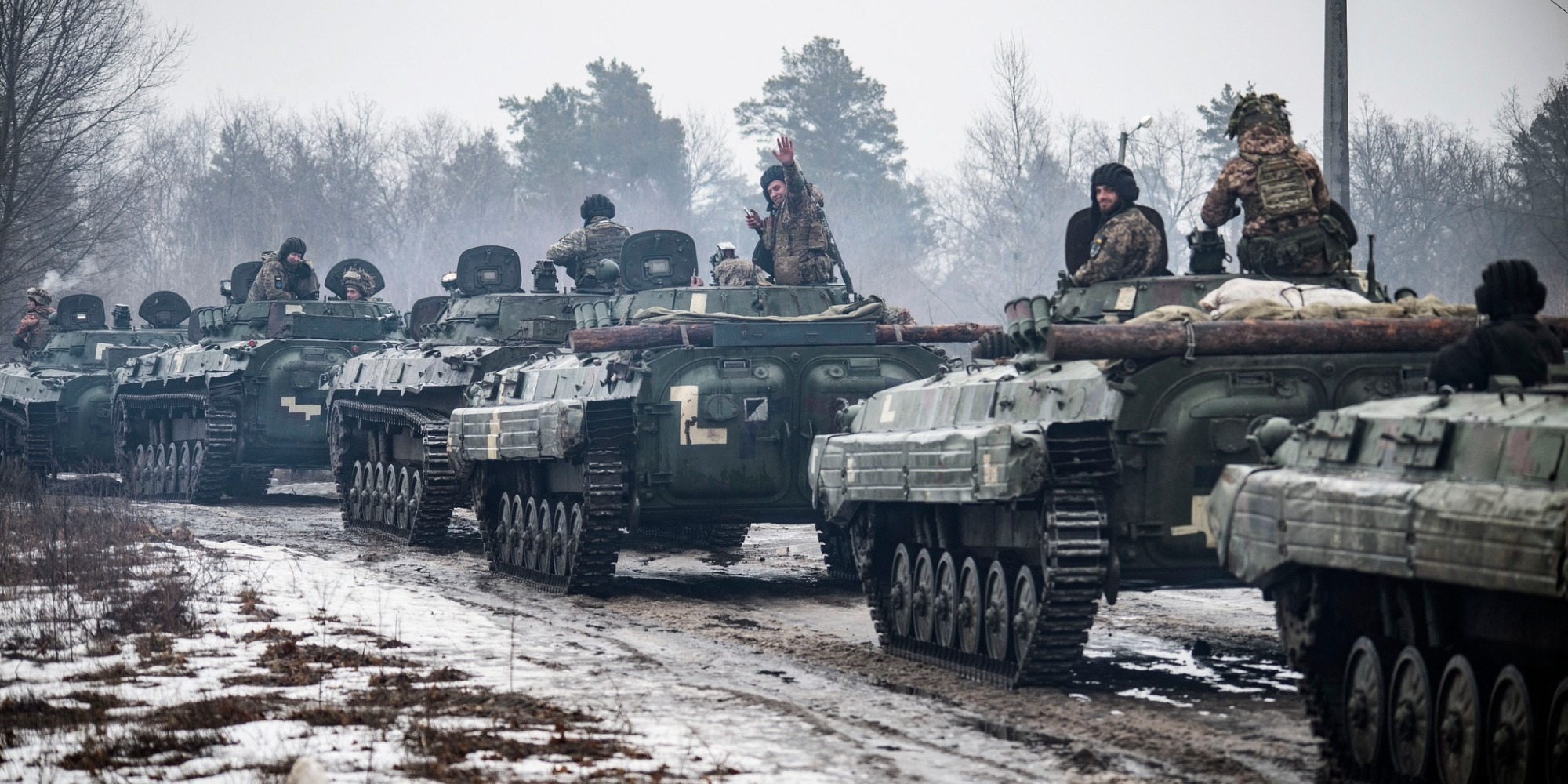Europe 1 with AFP 4:40 p.m., September 30, 2022
Russia has now annexed all or part of five regions of Ukraine, following referendums denounced by the international community.
These occupied areas are the subject of fierce fighting between Russia and Ukraine long before the start of the war in February 2022.
From the industrial region of Donbass (north-east) to the Crimean peninsula (south), Russia has now annexed all or part of five regions of Ukraine, following referendums denounced by the international community.
Some key facts about these occupied areas, which represent 19.4% of Ukrainian territory, including 11.9% conquered since the Russian offensive launched on February 24, according to estimates by the American think tank ISW (Institute for the Study of War ).
Lugansk and Donetsk
These two predominantly Russian-speaking regions constitute the Donbass, the industrial basin of Ukraine.
Between 2014 and 2022, a conflict pitted Ukrainian forces against separatists led by Moscow.
In February 2022, Vladimir Putin recognized the independence of the separatists, who then controlled 3% of Ukrainian territory, and justified the February 24 invasion by the need to save Russian-speaking populations from an alleged genocide.
Before the war, the Lugansk region had some 2.1 million inhabitants.
It borders on three sides with Russia and, according to the ISW, more than 99% of the territory has been under Moscow's control since the Russian spring and early summer offensive.
Of the four regions that have held so-called referendums in recent days, this is the one where Russian control is the most total, but it has come at the cost of heavy military losses.
Since the Ukrainian counter-offensive at the beginning of September which liberated a large part of the neighboring region of Kharkiv, the Ukrainian forces have also been nibbling away at Lugansk.
The neighboring region of Donetsk had 4.1 million pre-war inhabitants and its eponymous capital is the third largest city in the country.
Before the Russian invasion, about half of the region was under separatist control.
Today, around 58% of the territory is held by Moscow and its allies, including the port city of Mariupol, ravaged by siege and bombardment by Russian forces.
Deadly fighting continues there, and Ukraine saw progress there in September.
Zaporizhia
This region bordered by the Black Sea is home to the country's largest nuclear power plant, on the Dnieper River, and had 1.63 million inhabitants before the war.
According to the ISW, 72% of its area is occupied by Moscow and its military administration.
Its largest city, also called Zaporizhia, is held by Ukrainian forces, but its largest port, Berdyansk, is in Russian hands.
The gigantic nuclear power station there was taken by the Russian army in March.
Since then, the two camps have accused each other of bombing its surroundings at the risk of causing a nuclear accident.
Calls to demilitarize have multiplied, without success so far.
Inspectors from the International Atomic Energy Agency (IAEA) have been there since early September.
Kherson
Some 88% of this region, the westernmost of the area controlled by Moscow, and its eponymous capital came under Russian control in the early days of the war.
The region, very important for Ukrainian agriculture, is strategic for Moscow because it borders the Crimean peninsula, annexed in 2014.
Its seizure, associated with that of the coasts of Zaporijjia and Donetsk, thus allow Russia to constitute a territorial continuity of all the regions which it controls in Ukraine and of the Russian territory strictly speaking.
Ukraine is leading a counter-offensive there and has claimed some successes in recent months.
In particular, it damaged bridges spanning the Dnieper around the city of Kherson to break the supply lines of the Russian forces.
In addition, attacks targeting Russian and pro-Russian officials are increasing there and several of them have been killed.
Crimea
Annexed by Russia in 2014, after a referendum deemed illegal by kyiv and the West, this tourist and wine-growing peninsula poisoned relations between kyiv and Moscow after the fall of the USSR in 1991. Populated mainly by Russian speakers, Crimea had been "given" in 1954 to Soviet Ukraine by Nikita Khrushchev, then master of the Kremlin, himself of Ukrainian origin.
But on February 27, 2014, a pro-Russian commando seized the local parliament, where hastily summoned deputies elected a government favorable to Moscow.
On March 16, 2014, during a so-called referendum denounced by the international community, 97% of the inhabitants voted “in favor” of joining Russia, according to Moscow.
The annexation was ratified two days later by a treaty initialed by President Vladimir Putin.
Since 2014, many critics of Russia have been arrested there.
Of the two million inhabitants of Crimea, 59% are Russians, 24% Ukrainians and 12% Tatars, a community of Muslim tradition established since the 13th century.
By taking over Crimea - which represents 4.5% of Ukrainian territory - Russia has also recovered the large port of Sevastopol, where it has installed its military fleet since the 18th century, and which offers it an exit door to the sea. Black and from there to the Mediterranean and the Near East.
Since May 2018, the peninsula has been connected to mainland Russia by the 19-kilometre-long Kerch Bridge.
Used as a logistics rear base by Russia and long away from the fighting, Crimea has been hit since August by several explosions at military airfields or ammunition depots.
Ukraine later admitted carrying out the attacks.

